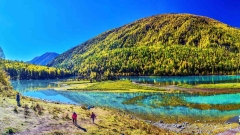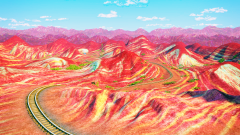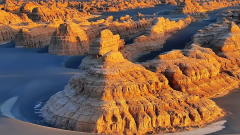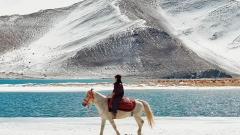Xinjiang, the vast autonomous region in China’s northwest, is a land of extremes — deserts that shimmer like gold, snow-capped mountains that pierce azure skies, and a kaleidoscope of cultures that has flourished along the Silk Road for millennia. Whether you seek natural grandeur, spiritual depth, or the pulse of ancient trade routes, Xinjiang offers an experience unlike any other region in China.
The Heart of the Desert: Urumqi and the Tianshan Mountains
Urumqi, Xinjiang’s bustling capital, is often the first stop for travellers. Nestled at the foot of the Tianshan Mountains, it is a modern city with threads of tradition running through its veins. A short drive from the city leads you to the Heavenly Lake of Tianshan, a tranquil alpine lake cradled by pine-covered slopes and dramatic peaks. The lake’s turquoise waters shimmer beneath the shadow of Bogda Peak, inviting both quiet contemplation and active exploration.
In Urumqi itself, the Xinjiang International Grand Bazaar beckons with the scents of grilled lamb, roasted nuts, and exotic spices. The blend of Uyghur, Han, and other ethnic communities makes it a cultural mosaic where East truly meets West.

Urumqi City
Sunken Oases and Ancient Ruins: Turpan’s Silk Road Echoes
Turpan lies below sea level, in the Turpan Depression, one of the hottest places in China. Despite its arid climate, it flourishes thanks to the ancient karez irrigation system — a marvel of engineering that has sustained this region for centuries.
Among Turpan’s treasures are the ancient ruins of Jiaohe and Gaochang, two Silk Road cities reduced to sun-baked bones. Walking through their crumbling avenues, it’s easy to imagine caravans once laden with silk, jade, and spices passing through.
Nearby, the Bezeklik Thousand Buddha Caves preserve vivid murals that speak to the region’s Buddhist past. Though weathered by time, these images whisper of a flourishing, cosmopolitan world where Indian, Persian, and Chinese influences met and merged.
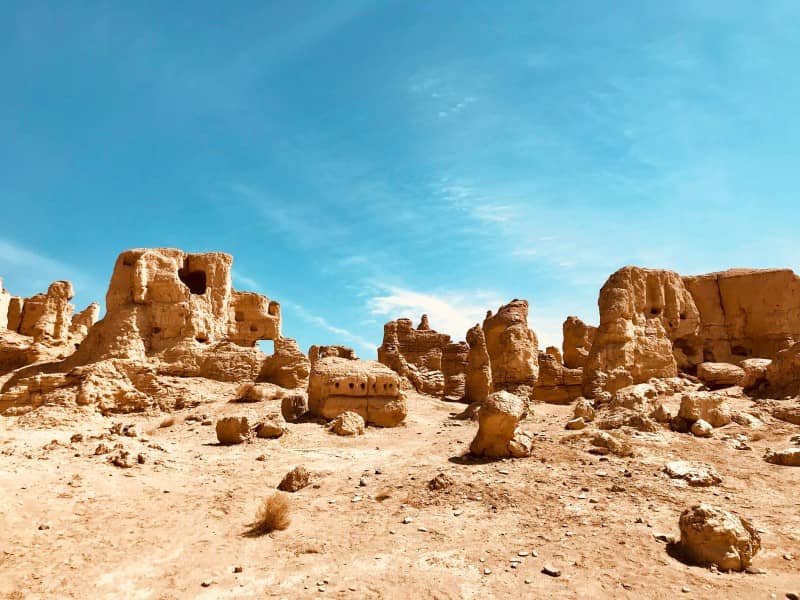
Jiaohe Ancient City Ruins
Where Cultures Converge: The Living Traditions of Kashgar
No destination captures the essence of Xinjiang like Kashgar, the fabled oasis town near China’s westernmost frontier. The Old City remains a maze of adobe alleys, where cobblers, blacksmiths, and bakers practise their trades much as they have for centuries.
The Id Kah Mosque, one of the largest in China, serves as a spiritual centre for Kashgar’s Uyghur population, and its Friday prayers swell the square with worshippers. Just as impressive is the Sunday Bazaar, a sprawling market where you can buy everything from embroidered caps to fat-tailed sheep.
Kashgar is also the gateway to the mighty Pamirs. The Karakoram Highway snakes south toward Pakistan, with the icy majesty of Muztagh Ata and Karakul Lake providing a visual feast for intrepid explorers.
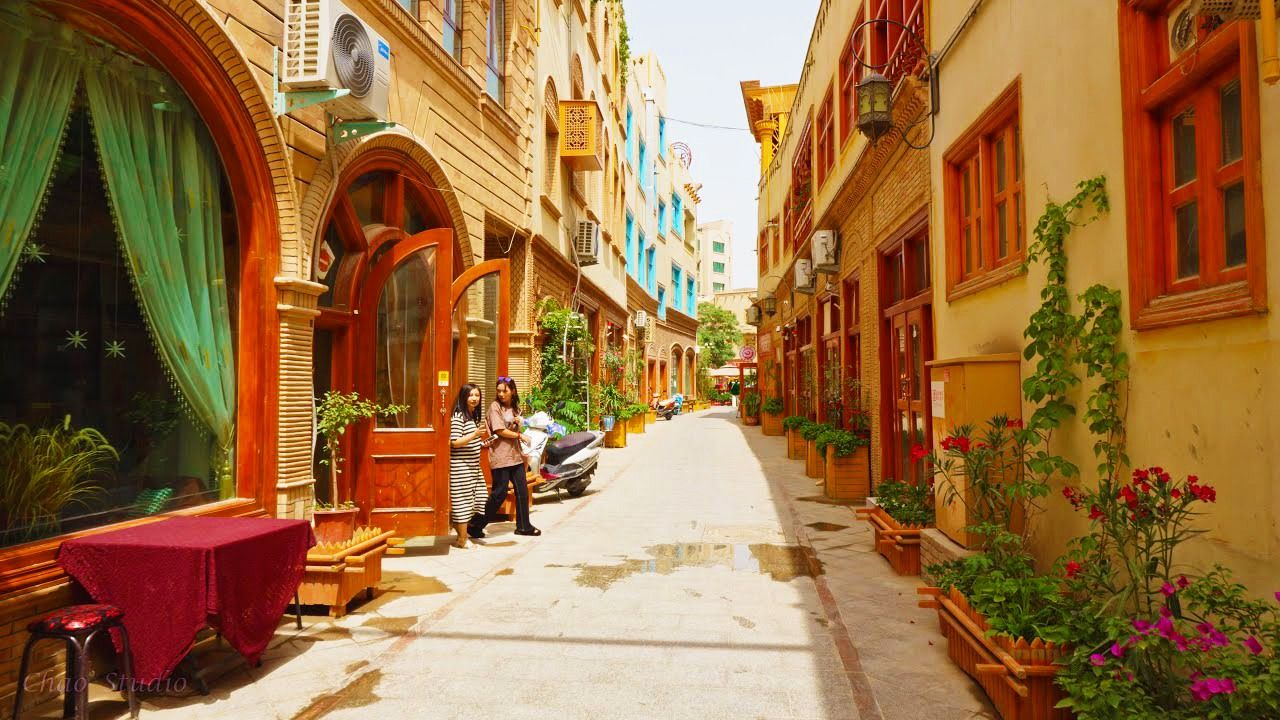
Cloth Bag Alley of Kashgar
The Magic of Tashkurgan and the Pamir Plateau
Tashkurgan, a town perched at 3,000 metres on the Pamir Plateau, feels like the roof of the world. This highland enclave is home to the Tajik people, whose stone houses and ornate costumes reflect a Persian heritage distinct from the rest of Xinjiang.
Here lies the Stone City, an ancient fort whose windswept ruins stand watch over vast grasslands and snow-draped peaks. Visitors may also witness traditional eagle hunting or join in folk dances performed beneath skies of impossible blue.
Travelling here feels less like crossing distance and more like moving through time — a sensation heightened by the surreal light of dawn breaking across the snowfields.
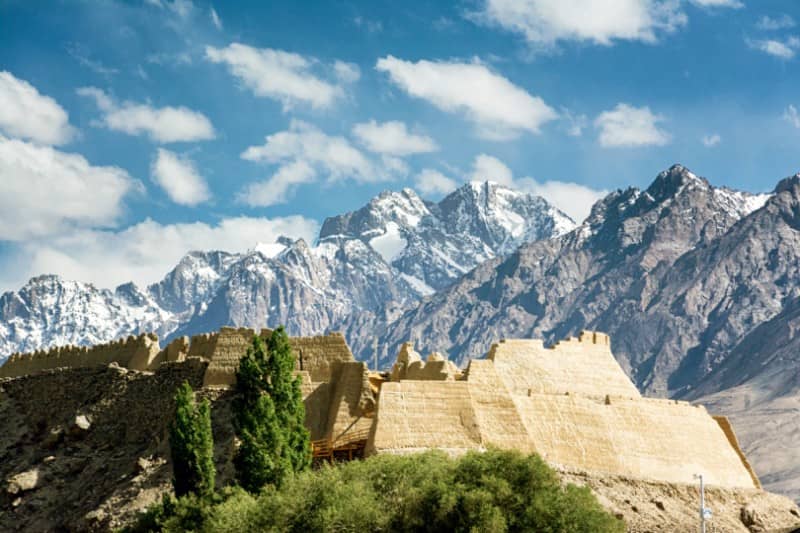
Stone City of Tashkurgan
The Whispering Sands of the Taklamakan Desert
The Taklamakan is one of the world’s largest shifting-sand deserts — and among its most alluring. Though its name ominously means “go in and you won’t come out,” there are safe and stunning ways to experience its beauty.
In Hotan and surrounding areas, camel treks, desert camps, and ancient riverbed settlements bring travellers into contact with the stark poetry of this wilderness. Visit the Hotan Silk Factory to see traditional sericulture still practised, or wander the Night Market to savour sweet melons and hand-pulled noodles beneath the desert stars.
Seasonal Wonders and Nomadic Traditions in the Ili Valley
Far to the northwest, the Ili Valley bursts into colour every spring and summer. Lavender fields stretch across the land near Huocheng, rivaling Provence in hue and fragrance, while the Nalati Grasslands offer a sweeping vista of flower-dotted meadows where Kazakh herders graze their horses.
Nomadic culture thrives here, with opportunities to stay in a yurt, learn about falconry, or ride into the hills on sturdy local ponies. Festivals punctuate the seasons, full of music, dancing, and feasts under endless sky.

Lavender Base
A Culinary Journey Through Xinjiang
No travel guide to Xinjiang would be complete without mention of its culinary tapestry. Uyghur cuisine blends Middle Eastern and Central Asian influences with Chinese flair. Signature dishes like lamb kebabs, hand-pulled noodles (laghman), and rice pilaf (polo) are seasoned with cumin, garlic, and chili in generous measure.
In the markets of Yining, the stews are thicker, the breads flatter, and the fruits sweeter — thanks to the region’s exceptional sun. Sampling street food here is as much a cultural journey as visiting any ancient ruin.
Why Xinjiang is Worth the Journey
Xinjiang is not merely a place of scenic splendour; it is a living museum of cultures, languages, and landscapes that challenge one’s perceptions and awaken the senses. From the haunting ruins of Silk Road cities to the lively bustle of modern bazaars, from desert sands to snow-capped summits, it is a region of contrasts united by a shared grandeur.
Whether you come seeking history, natural beauty, or the vibrancy of human life, Xinjiang is ready to reward your curiosity with tales older than empires and horizons wider than dreams.



